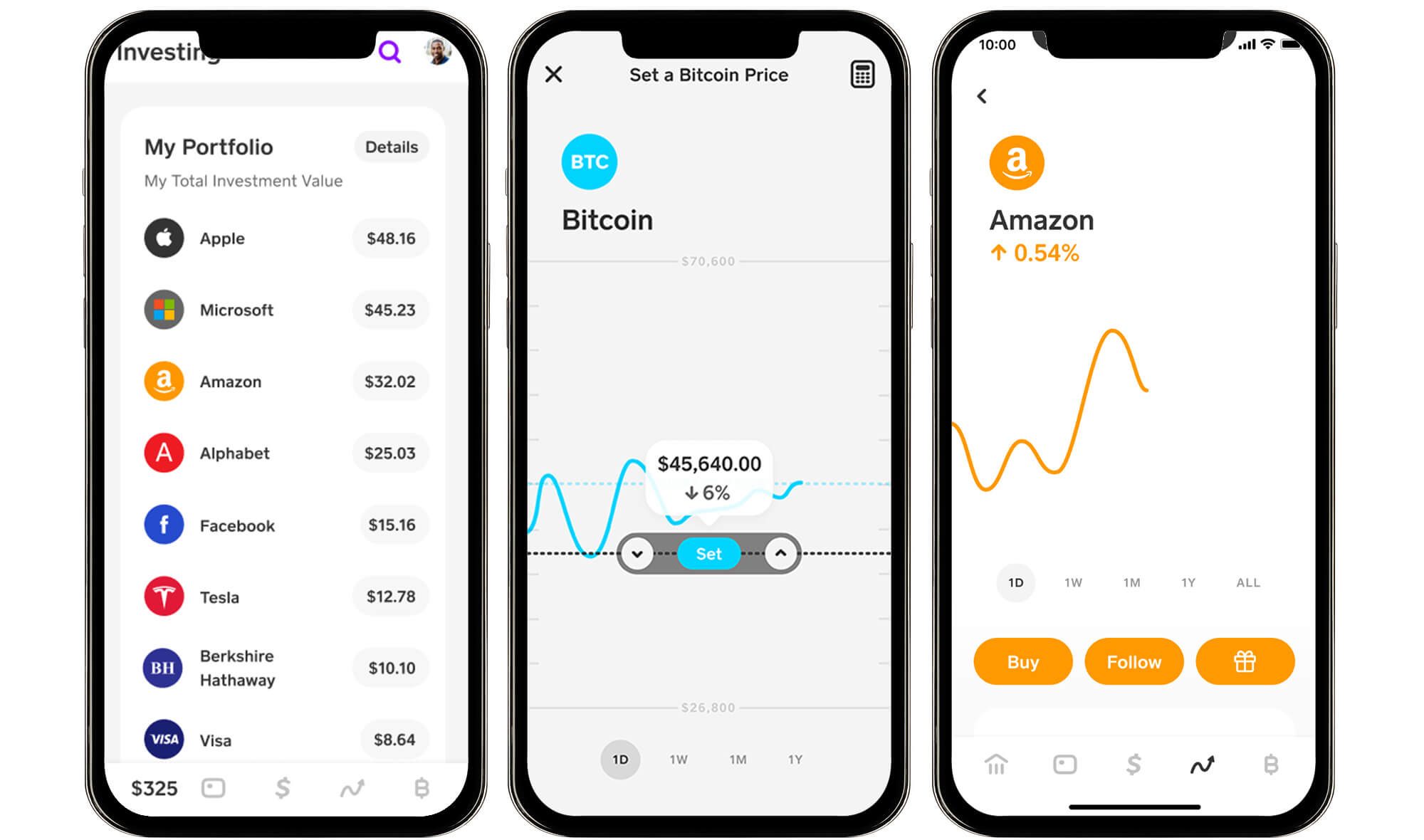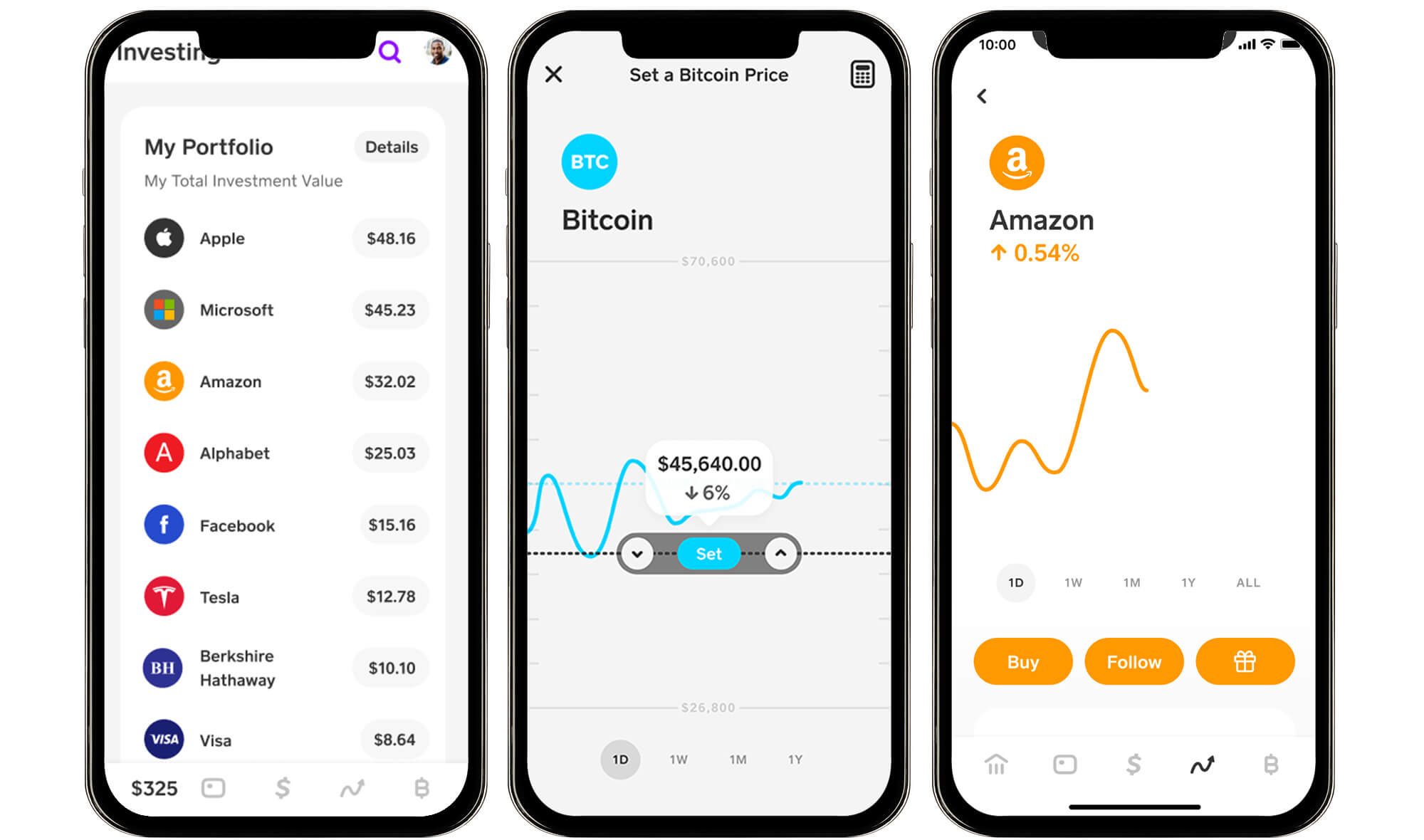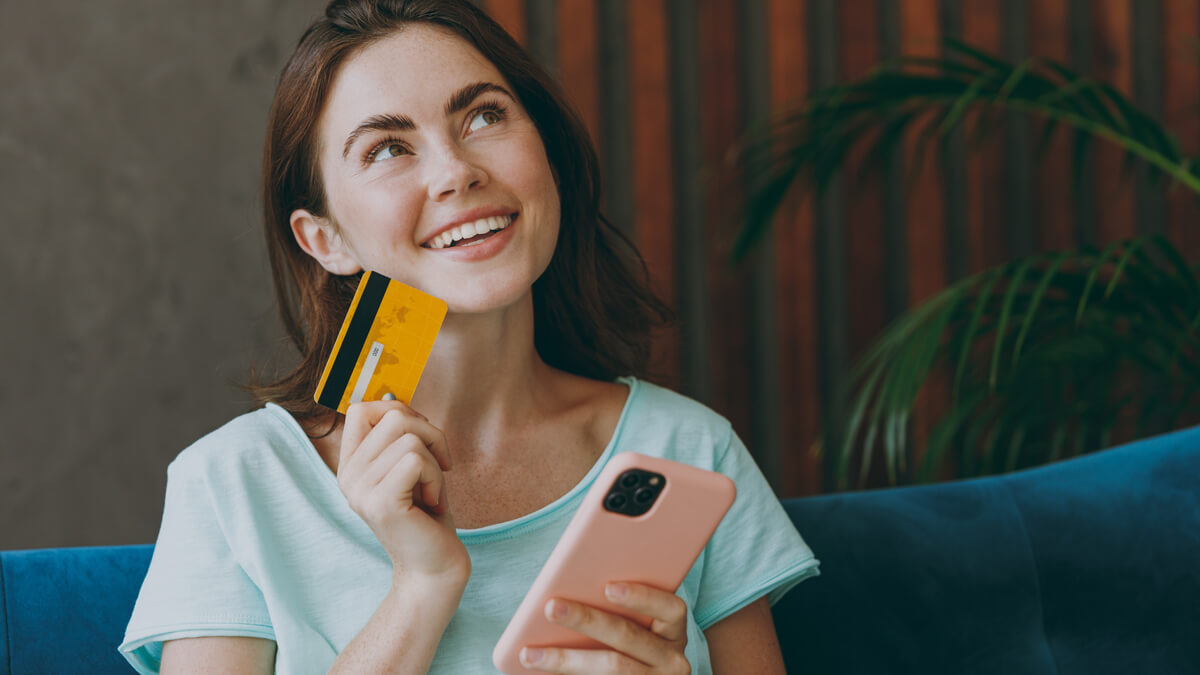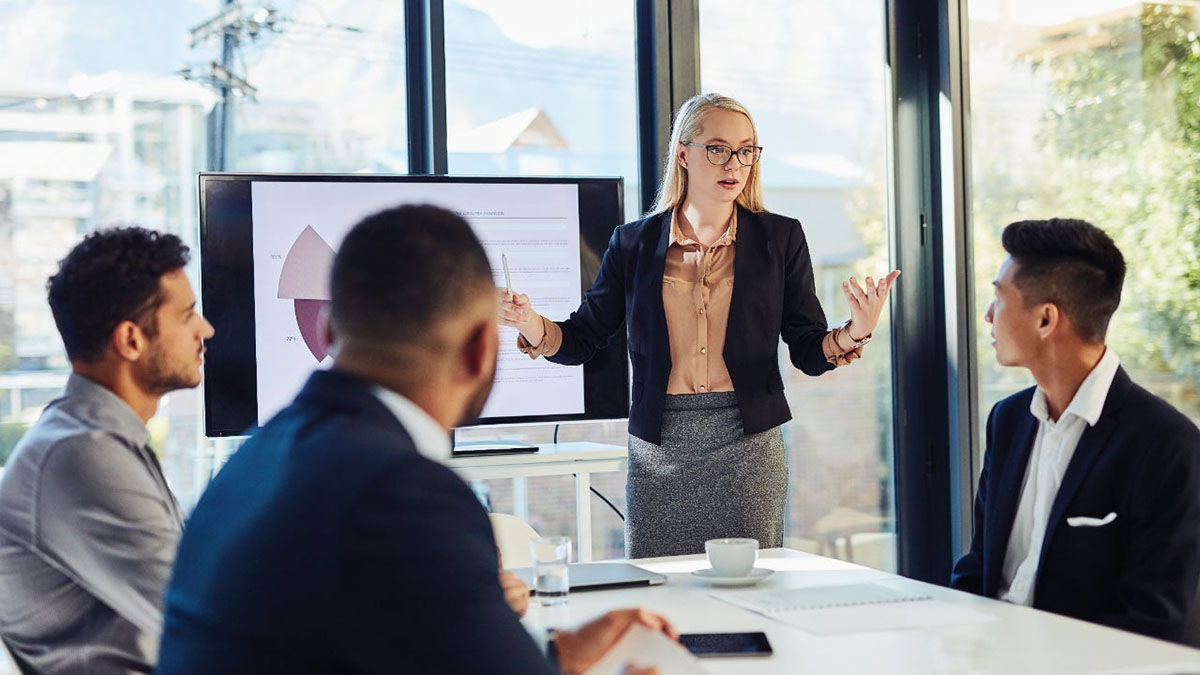

Finance
How Does Investing In Stocks Work On Cash App
Modified: February 21, 2024
Learn how investing in stocks on Cash App works and gain financial knowledge. Start your journey in finance today!
(Many of the links in this article redirect to a specific reviewed product. Your purchase of these products through affiliate links helps to generate commission for LiveWell, at no extra cost. Learn more)
Table of Contents
- Introduction
- What is Cash App?
- What are Stocks?
- How to Buy Stocks on Cash App
- Setting Up a Cash App Investing Account
- Adding Funds to Your Cash App Investing Account
- Finding Stocks to Invest In
- Placing an Order to Buy Stocks
- Monitoring and Managing Your Investments
- Selling Stocks on Cash App
- Cash App Investing Fees and Charges
- Risks and Considerations in Stock Investing on Cash App
- Conclusion
Introduction
Investing in stocks has long been a popular way for individuals to grow their wealth and secure their financial future. With the advancement of technology and the rise of mobile apps, it has become easier than ever to participate in the stock market. One such app that has gained immense popularity is Cash App.
Cash App is a mobile payment service developed by Square, Inc. It allows users to send and receive money, make purchases, and now, invest in stocks. With Cash App’s simple and intuitive interface, users can easily navigate the platform to buy and sell stocks, making it a great option for both beginner and experienced investors.
But what exactly are stocks? In simple terms, stocks represent a piece of ownership in a publicly traded company. When you invest in stocks, you become a shareholder, entitling you to a portion of the company’s profits and assets. The value of stocks can fluctuate depending on various factors such as market conditions, company performance, and investor sentiment.
If you’re new to investing or interested in exploring stock market opportunities through Cash App, you’ve come to the right place. In this article, we will guide you through the process of buying stocks on Cash App and provide essential tips to help you make informed investment decisions.
Before diving into the specifics of how to buy stocks on Cash App, it’s important to set up your Cash App investing account. If you already have a Cash App account, you can simply enable the investing feature. If not, you’ll need to download the Cash App from your mobile app store and create an account. Once you have your account set up, you can begin your journey into the world of stock investing.
Now that we’ve covered the basics, let’s explore how you can set up your Cash App investing account and start buying stocks to build your investment portfolio.
What is Cash App?
Cash App is a mobile payment service and digital wallet that was developed by Square, Inc. With over 36 million active users, Cash App has become one of the most popular peer-to-peer payment apps available today.
Initially launched in 2013 as a simple way to send money to friends and family, Cash App has evolved to offer a wide range of financial services, including the ability to invest in stocks. The app allows users to link their bank accounts or debit cards and easily transfer funds to others with just a few taps on their smartphone.
One of the standout features of Cash App is its user-friendly interface, which makes it easy for even the most novice investors to navigate. With its clean design and streamlined options, Cash App provides a seamless experience for users looking to dip their toes into the world of stock investing.
Cash App offers a diverse range of investment options, including popular stocks like Apple, Amazon, and Google, as well as exchange-traded funds (ETFs) and bitcoin. The app provides real-time market data and insights to help users make informed investment decisions.
In addition to its investment features, Cash App also offers a range of other financial services. Users can use the app to make purchases at participating retailers, withdraw cash from ATMs using the Cash Card, and even receive direct deposits of their paychecks.
Another notable feature of Cash App is its Cash Boost program. With Cash Boost, users can earn instant discounts or cashback on their purchases at select merchants. This can help users save money while effortlessly managing their everyday expenses.
When it comes to security, Cash App takes the protection of its users’ funds and data seriously. The app uses encryption and fraud detection mechanisms to ensure that transactions and personal information remain secure. Additionally, Cash App allows users to enable PIN, Touch ID, or Face ID verification for added security.
Whether you’re looking to send money to a friend, invest in stocks, or enjoy the convenience of a digital wallet, Cash App offers a range of features and services to meet your financial needs. With its user-friendly interface and strong security measures, Cash App provides a seamless and secure experience for users to manage their finances and explore investment opportunities.
What are Stocks?
Stocks, also known as shares or equity, represent ownership in a company. When you invest in stocks, you become a shareholder, which means you have a stake in the company’s assets, profits, and decision-making processes.
When a company decides to go public, it issues shares of stock to the public, allowing individuals to purchase those shares and become part-owners of the company. Stocks are traded on stock exchanges such as the New York Stock Exchange (NYSE) or the Nasdaq, where buyers and sellers come together to complete transactions.
Stocks come in different types, such as common stock and preferred stock. Common stock is the most common type and represents the majority of shares issued by a company. It gives shareholders voting rights in the company and the opportunity to receive dividends. Preferred stock, on the other hand, has a higher claim on the company’s assets and earnings but usually does not grant voting rights.
The value of stocks can fluctuate based on various factors, including the company’s performance, market conditions, and investor sentiment. When a company performs well and its prospects look promising, demand for its stock may increase, driving up its price. Conversely, negative news or poor performance can cause the price of a stock to decline.
Investing in individual stocks involves analyzing the fundamentals of the company, including its financial health, competitive advantages, and growth potential. Investors may also consider market trends, industry developments, and the overall economic outlook. It’s important to conduct thorough research and analysis before making investment decisions to minimize risk and maximize potential returns.
Stocks provide opportunities for long-term capital appreciation and the potential for earning dividends. By investing in a diversified portfolio of stocks, investors can spread their risk across different companies, industries, and regions. This can help mitigate the impact of any one company’s poor performance on the overall investment portfolio.
One of the advantages of investing in stocks is liquidity. Stocks can be bought and sold relatively easily on stock exchanges, providing investors with the flexibility to make changes to their portfolio as market conditions or personal circumstances dictate.
While stocks have the potential for high returns, they also come with risks. The value of stocks can fluctuate significantly, and there is no guarantee of profit. Investors need to be aware of market volatility, economic downturns, and other risk factors associated with stock investing.
Overall, stocks offer individuals the opportunity to participate in the growth and success of companies. By understanding the nature of stocks and conducting thorough research, investors can make informed decisions and potentially reap the rewards of their investment over time.
How to Buy Stocks on Cash App
Buying stocks on Cash App is a straightforward process that can be completed in just a few simple steps. Here’s a step-by-step guide on how to buy stocks on Cash App:
- Setting Up a Cash App Investing Account: If you already have a Cash App account, you can enable the investing feature by navigating to the “Investing” tab in the app. If you’re new to Cash App, you’ll need to download the app from your mobile app store and create an account.
- Adding Funds to Your Cash App Investing Account: Before you can buy stocks, you’ll need to ensure that you have funds in your Cash App investing account. You can add funds by linking your bank account or debit card to your Cash App account and transferring money into it.
- Finding Stocks to Invest In: Once your Cash App investing account is set up and funded, you can start exploring the available stocks. Cash App provides a user-friendly interface that allows you to search for specific stocks or browse through various categories.
- Placing an Order to Buy Stocks: When you’ve found a stock you want to invest in, you can place an order to buy it. Cash App gives you the option to specify how much money you want to invest in the stock or the number of shares you want to purchase. It’s important to review your order carefully before confirming to ensure accuracy.
- Monitoring and Managing Your Investments: After purchasing stocks on Cash App, you can monitor their performance in the “Investing” tab. Cash App provides real-time market data and insights to help you stay informed about your investments. You can also set up price alerts to receive notifications when a stock reaches a certain price.
- Selling Stocks on Cash App: If you decide to sell your stocks, you can do so on Cash App as well. Similar to buying stocks, the selling process is straightforward. You can specify the number of shares you want to sell or the amount of money you want to receive. It’s important to note that selling stocks may result in capital gains or losses, which could have tax implications.
It’s important to note that investing in stocks carries risks, and it’s essential to conduct thorough research and analysis before making investment decisions. Cash App provides educational resources and information to help you make informed investment choices.
By following these steps and exercising caution, you can confidently buy stocks on Cash App and begin your journey into the world of stock investing.
Setting Up a Cash App Investing Account
Setting up a Cash App investing account is the first step in buying and selling stocks on the platform. If you already have a Cash App account, enabling the investing feature is a breeze. If you’re new to Cash App, you’ll need to download the app from your mobile app store and create an account. Here’s how to set up a Cash App investing account:
- Download and Install Cash App: Visit your mobile app store, search for Cash App, and download the app to your smartphone. Cash App is available for both iOS and Android devices.
- Create a Cash App Account: Open the Cash App and tap on “Sign Up” to create a new account. You’ll be prompted to enter some personal information, such as your name, email address, and phone number. Follow the instructions to complete the registration process.
- Link Your Bank Account or Debit Card: To fund your Cash App investing account and make transactions, you’ll need to link a bank account or debit card to your Cash App account. Cash App securely encrypts your financial information to protect your privacy and security.
- Navigate to the “Investing” Tab: Once you’ve successfully set up your Cash App account, open the app and navigate to the “Investing” tab. If you don’t see the tab, you may need to enable the investing feature in the app’s settings.
- Enable Investing: If you haven’t enabled investing on Cash App, you’ll be prompted to do so when you navigate to the “Investing” tab. Follow the instructions to enable investing on your Cash App account.
- Review and Agree to the Cash App Investing Disclosures: Cash App will provide you with important disclosures and information about investing. Take the time to carefully read and understand these disclosures before proceeding. Once you’ve reviewed them, you’ll need to agree to them to continue.
- Set Up Your Cash App Investing Account: You may be required to provide additional information to set up your Cash App investing account, such as your employment information or investment experience. Follow the prompts and provide the necessary details to complete the setup process.
Once you’ve completed these steps, congratulations! You’ve successfully set up your Cash App investing account. You can now proceed to add funds to your account and start exploring stocks to invest in.
Remember, investing in stocks carries risks, and it’s crucial to understand the risks and do your research before making any investment decisions. Cash App provides educational resources and tools to help you make informed choices and manage your investments effectively.
By setting up your Cash App investing account, you gain access to a convenient and user-friendly platform for buying and selling stocks, allowing you to embark on your journey as a stock market investor.
Adding Funds to Your Cash App Investing Account
Before you can start buying stocks on Cash App, you need to ensure that you have sufficient funds in your Cash App investing account. Adding funds is a simple process that can be done using your linked bank account or debit card. Follow these steps to add funds to your Cash App investing account:
- Open Cash App: Launch the Cash App on your smartphone and log in to your account using your credentials. Make sure you are on the home screen of the app.
- Tap on the “Banking” or “My Cash” Tab: Within the Cash App, locate and tap on the “Banking” or “My Cash” tab at the bottom of the screen. This will take you to your Cash App balance and transaction history.
- Click on the “Add Cash” or “Add Funds” Option: Look for the “Add Cash” or “Add Funds” option, typically represented by a “+” or dollar sign symbol. Tap on it to proceed.
- Select the Amount to Add: On the next screen, you will be prompted to enter the amount of money you want to add to your Cash App investing account. Type in the desired amount using the on-screen keypad.
- Choose Funding Source: Cash App gives you the option to choose between your linked bank account or debit card to fund your investing account. Select the preferred funding source for your transaction.
- Authenticate the Transaction: Depending on your security settings, you may be required to verify your identity or enter a passcode, PIN, or biometric authentication (e.g., fingerprint or facial recognition) to complete the transaction.
- Confirm and Add Funds: Review the transaction details carefully to ensure accuracy. If everything looks correct, tap on the “Confirm” or “Add Funds” button to initiate the fund transfer.
Once the transaction is completed successfully, the funds will be added to your Cash App investing account. You can then use these funds to buy stocks and start building your investment portfolio.
It’s worth noting that adding funds to your Cash App investing account may take a few moments to process, depending on your bank or card issuer. If you encounter any issues or have concerns, consider reaching out to Cash App’s customer support for assistance.
Remember to always be mindful of the funds you add to your Cash App investing account and invest wisely. Take advantage of Cash App’s educational resources and research tools to make informed investment decisions that align with your financial goals and risk tolerance.
By adding funds to your Cash App investing account, you unlock the ability to actively participate in the stock market and potentially grow your wealth through strategic investments.
Finding Stocks to Invest In
Once you have set up your Cash App investing account and added funds, the next step is to find stocks to invest in. Cash App provides a user-friendly interface that allows you to easily search for specific stocks or explore various categories to discover investment opportunities. Here’s how you can find stocks to invest in on Cash App:
- Open the Cash App: Launch the Cash App on your mobile device and log in to your account using your credentials.
- Go to the “Investing” Tab: Tap on the “Investing” tab at the bottom of the screen. This will take you to the investment section of Cash App.
- Explore Categories: Cash App offers various categories to help you navigate through different types of stocks. These categories may include popular stocks, sectors, industries, or curated lists. Browse through these categories to find stocks that align with your investment goals or interests.
- Search for Specific Stocks: If you have a particular stock in mind, you can use the search functionality in Cash App to find it. Tap on the search bar and type in the name or ticker symbol of the stock you wish to invest in. Cash App will display the relevant results, allowing you to select the desired stock.
- Review Stock Details: When you find a stock that interests you, tap on it to access more detailed information. Cash App provides essential details about the stock, including its current price, performance chart, company profile, and key financial indicators. Take the time to review this information to make more informed investment decisions.
- Access External Research: Cash App also offers access to external research sources, such as analyst ratings, news articles, and investment insights. These resources can provide valuable insights to further evaluate your investment choices and stay updated on market trends.
- Consider Long-Term Potential: As you explore different stocks, consider the long-term potential of the companies you are interested in. Look for companies with strong fundamentals, a history of consistent revenue and earnings growth, and a competitive advantage in their industry. Evaluate their business models and future prospects to assess their likelihood of continued success.
- Take Advantage of Cash App’s Insights: Cash App provides real-time market data and insights to help you make informed investment decisions. Pay attention to any notifications or alerts regarding market trends, stock performance, or relevant news that could impact your investment decisions.
Remember that investing in stocks involves risks, and it’s important to conduct thorough research and consider your risk tolerance before making investment decisions. By leveraging the resources and tools available on Cash App, you can find stocks that align with your investment strategy and set yourself up for potential long-term growth.
Keep in mind that no investment is guaranteed, and diversifying your portfolio is generally considered a prudent strategy. Consider spreading your investments across different sectors or industries to mitigate risks and maximize potential returns.
By utilizing Cash App’s intuitive interface and comprehensive stock search capabilities, you can efficiently find stocks to invest in that align with your investment objectives and make informed choices that align with your financial goals.
Placing an Order to Buy Stocks
Once you have found stocks that you want to invest in on Cash App, the next step is to place an order to buy those stocks. Cash App makes it simple and straightforward to buy stocks, whether you are a beginner or an experienced investor. Here’s a step-by-step guide on how to place an order to buy stocks on Cash App:
- Open Cash App: Launch the Cash App on your smartphone and log in to your account using your credentials.
- Go to the “Investing” Tab: Tap on the “Investing” tab at the bottom of the screen to access the investment section of Cash App.
- Select the Stock: In the “Investing” tab, locate the stock you want to buy. You can either search for the specific stock using the search bar or browse through the available categories to find it. Tap on the stock to access more detailed information.
- Review the Stock Details: Before placing an order, review the relevant details about the stock, such as its current price, performance chart, company profile, and key financial indicators. This information will help you make an informed decision about whether to buy the stock.
- Specify the Buy Amount: When you are ready to proceed with the purchase, Cash App allows you to specify the buy amount. You can either enter the amount of money you want to invest in the stock or the number of shares you want to purchase.
- Confirm the Order: After specifying the buy amount, review the order summary to ensure its accuracy. Check the total investment amount, any applicable fees, and the estimated quantity of shares you will receive. If everything looks correct, tap on the “Confirm” button to place the order.
- Authenticate the Transaction: Depending on your security settings, you may be prompted to verify your identity or enter a passcode, PIN, or biometric authentication (e.g., fingerprint or facial recognition) to authenticate the transaction.
- View Order Confirmation: Once the order is successfully placed, Cash App will provide you with an order confirmation. This confirmation will include details such as the stock name, the number of shares or amount invested, and the order status.
- Monitor Your Investment: After buying the stock, you can monitor its performance and track your investment in the “Investing” tab of Cash App. Cash App also provides real-time market data and insights to keep you informed about the performance of your investments.
It’s important to note that the execution of stock orders on Cash App is subject to market conditions and availability. The price you pay for a stock may vary slightly from the quoted price at the time you place the order due to market fluctuations.
Additionally, it’s crucial to conduct your own research and consider your risk tolerance before making any investment decisions. Cash App provides educational resources and external research materials to help you make informed choices. Take advantage of these resources to enhance your understanding of the stocks you are interested in and make prudent investment decisions.
By following these steps and exercising caution, you can easily and confidently place an order to buy stocks on Cash App, taking a step forward in building your investment portfolio.
Monitoring and Managing Your Investments
Once you have bought stocks on Cash App, it’s important to actively monitor and manage your investments to stay informed and make any necessary adjustments. Cash App provides tools and features to help you track the performance of your investments and make informed decisions. Here’s how you can effectively monitor and manage your investments on Cash App:
- Access the “Investing” Tab: Open the Cash App on your smartphone and navigate to the “Investing” tab. This section is where you can view and manage your investment portfolio.
- Review Your Holdings: In the “Investing” tab, you will find a list of your current holdings. This will include the stocks you have purchased through Cash App. Take the time to review your holdings to see how they are performing.
- Track Performance: Cash App provides real-time market data and insights to help you stay informed about the performance of your investments. You can view the current price, price change, and overall performance of each stock you own. Use this information to track how your investments are doing and make informed decisions.
- Set Up Price Alerts: Cash App allows you to set up price alerts for specific stocks. This feature notifies you when the price of a stock reaches a certain threshold that you define. Price alerts help you stay on top of market movements and make timely decisions based on your investment goals.
- Research and Insights: Cash App provides access to external research and insights to help you make informed investment decisions. Take advantage of this feature to access analyst ratings, news articles, and other relevant information about your investments.
- Consider Portfolio Rebalancing: Over time, the composition of your investment portfolio may shift due to changes in stock prices and market conditions. Consider regular portfolio rebalancing to ensure your investments remain aligned with your investment objectives. Rebalancing involves buying or selling assets to maintain the desired allocation of your portfolio.
- Educate Yourself: Stay engaged with the stock market and continuously educate yourself about investing. Cash App provides educational resources that can enhance your knowledge and understanding of investing principles, strategies, and market dynamics. The more informed you are, the better equipped you’ll be to make sound investment decisions.
- Review Account Statements: Periodically review your account statements and transaction history on Cash App to ensure accuracy. This will help you keep track of your investment activities, including purchases, sales, and any associated fees.
Remember that investing in stocks involves risks, and the value of your investments can fluctuate. It’s important to maintain a long-term perspective, regularly assess your investment strategy, and adjust it as needed based on your financial goals and risk tolerance.
By actively monitoring and managing your investments on Cash App, you can stay informed about the performance of your stocks, make timely decisions, and potentially maximize your investment returns over time.
Selling Stocks on Cash App
At some point, you may decide to sell your stocks on Cash App. Selling stocks on Cash App is a straightforward process that allows you to liquidate your investments and potentially realize any gains. Here’s a step-by-step guide on how to sell stocks on Cash App:
- Open Cash App: Launch the Cash App on your smartphone and log in to your account using your credentials.
- Go to the “Investing” Tab: Tap on the “Investing” tab at the bottom of the screen to access the investment section of Cash App.
- Select the Stock to Sell: In the “Investing” tab, locate the stock you want to sell. You can use the search functionality or browse through your portfolio holdings to find the stock you wish to sell.
- Review Stock Details: Before proceeding with the sale, ensure that you review the relevant details about the stock, including its current price and performance. This information can help you make an informed decision about selling the stock.
- Specify the Sell Amount: When you are ready to sell, Cash App allows you to specify the sell amount. You can enter the number of shares you want to sell or the amount of money you want to receive from the sale.
- Confirm the Order: After specifying the sell amount, review the order summary to ensure its accuracy. Check the total sell amount, any applicable fees, and the estimated number of shares being sold. If everything looks correct, tap on the “Confirm” button to place the sell order.
- Authenticate the Transaction: Depending on your security settings, you may need to verify your identity or enter a passcode, PIN, or biometric authentication (e.g., fingerprint or facial recognition) to authenticate the transaction.
- View Sell Order Confirmation: Once the sell order is successfully placed, Cash App will provide you with a confirmation. This confirmation will include details such as the stock name, the number of shares sold, the sell price, and the order status.
- Monitor the Sell Order: After initiating the sell order, you can monitor its progress in the “Investing” tab. Cash App will provide updates on the order status, including whether the order is completed or still pending.
It’s important to note that selling stocks can result in capital gains or losses, which may have tax implications. Consult with a tax professional or financial advisor to understand the potential tax consequences of selling stocks.
When deciding to sell stocks, it’s crucial to consider your investment objectives, market conditions, and any changes in your financial situation. Regularly reevaluate your investment portfolio to ensure that it aligns with your goals and risk tolerance.
Cash App provides real-time market data and insights to help you make informed decisions about selling stocks. Take advantage of these resources to stay updated on market trends and monitor the performance of your investments.
By following these steps and being mindful of market conditions, you can confidently sell stocks on Cash App and manage your investment portfolio according to your financial goals.
Cash App Investing Fees and Charges
When investing in stocks on Cash App, it’s important to be aware of the fees and charges associated with the platform. Understanding these costs can help you make more informed investment decisions and manage your overall investment expenses. Here are the key fees and charges to consider when using Cash App for investing:
- Trading Fees: Cash App charges a per-transaction fee when buying or selling stocks. The fee is typically a fixed amount or a percentage of the transaction value. It’s important to review the fee structure on Cash App to understand the costs associated with your investment activities. Keep in mind that trading fees may vary depending on the size and complexity of the transaction.
- Account Maintenance Fees: Cash App does not charge any account maintenance fees for its investing feature. This means that you can hold stocks in your Cash App investing account without incurring any ongoing charges for account maintenance or inactivity.
- Additional Charges: While Cash App does not impose additional charges specifically related to investing, it’s important to be mindful of any potential fees that may arise. For example, if you transfer funds from your Cash App investing account to an external bank account, there may be fees associated with the transfer imposed by the bank or financial institution.
It’s important to review the latest fee schedule provided by Cash App as fees and charges may be subject to change. By understanding the fees and charges associated with Cash App investing, you can better evaluate the costs involved in your investment activities and factor them into your overall investment strategy.
Additionally, it’s worth noting that investing in stocks can have tax implications. Capital gains made through selling stocks may be subject to taxes. It is advisable to consult with a tax professional or financial advisor to understand the tax implications of investing and selling stocks on Cash App based on your individual tax situation.
Cash App provides transparency when it comes to its fees and charges. Before executing any investment transactions, take the time to review and understand the fees associated with buying, selling, and managing your investments on the platform.
By being aware of the fees and charges, you can make well-informed investment decisions while keeping your investment costs in check.
Risks and Considerations in Stock Investing on Cash App
While stock investing can offer opportunities for growth and long-term wealth accumulation, it’s important to understand and consider the inherent risks involved. Here are some key risks and considerations to keep in mind when investing in stocks on Cash App:
- Market Volatility: The stock market can be highly volatile, with stock prices fluctuating frequently. This volatility can be influenced by economic factors, geopolitical events, and investor sentiment. Prices of stocks you own can rise or fall rapidly, potentially leading to significant gains or losses.
- Company-Specific Risks: Investing in individual stocks carries the risk associated with the performance of specific companies. Factors such as financial mismanagement, changes in industry dynamics, or product failures can negatively impact a company’s stock price and, consequently, your investment.
- Diversification: Lack of diversification can expose your investment portfolio to higher levels of risk. Relying too heavily on a few stocks without spreading your investments across different companies and industries can leave you vulnerable to the performance of individual stocks.
- Investment Knowledge: It’s essential to have a good understanding of the stocks you are investing in and the investment strategies you are employing. Lack of knowledge or relying solely on the advice of others can increase the risk of making uninformed decisions or falling victim to market speculation.
- Liquidity and Accessibility: While Cash App provides ease of access to stock investing, it’s important to consider factors that may impact the liquidity and accessibility of your investments. Some stocks may have lower trading volumes, making it difficult to buy or sell shares at desired prices, especially during times of high market volatility.
- Tax Implications: Investing in stocks can have tax implications, including capital gains taxes on profits made from selling stocks. It’s advisable to consult with a tax professional to understand the tax implications specific to your investment activities and individual tax situation.
- Past Performance and Future Outlook: Past performance of stocks is not indicative of future results. While historical data and trends can provide insights, they should not be the sole basis for investment decisions. It’s important to assess a company’s future prospects, financial health, competitive position, and industry dynamics when evaluating investment opportunities.
These risks and considerations highlight the importance of conducting thorough research, diversifying your portfolio, and being aware of market dynamics when investing in stocks on Cash App. It’s recommended to familiarize yourself with relevant financial concepts, stay updated on market trends, and consider seeking guidance from a financial advisor or investment professional.
By understanding and managing these risks, you can approach stock investing on Cash App with a prudent mindset, making informed decisions that align with your investment goals and risk tolerance.
Conclusion
Investing in stocks on Cash App can provide a convenient and user-friendly way to participate in the stock market and potentially grow your wealth. With its intuitive interface and comprehensive features, Cash App enables both beginner and experienced investors to navigate the world of stock investing with ease.
In this article, we have explored the process of buying and selling stocks on Cash App, from setting up your Cash App investing account to finding stocks, placing orders, and monitoring your investments. We have also discussed important considerations such as fees, risks, and the need for research and diversification.
While stock investing has the potential for significant growth and long-term returns, it’s crucial to approach it with caution and be mindful of the inherent risks involved. Market volatility, company-specific risks, and the need for diversification are important factors to consider when formulating your investment strategy.
By utilizing the tools and educational resources provided by Cash App, staying informed about market trends, and conducting thorough research, you can make well-informed investment decisions tailored to your individual goals and risk tolerance.
Remember, stock investing requires a long-term perspective and patience. It’s important to regularly review and reassess your investment portfolio, taking into account changes in your financial situation, market conditions, and investment goals.
While Cash App offers a user-friendly platform for investing, it’s important to supplement it with additional sources of information and seek advice from professionals when needed. Consider consulting with a financial advisor or tax professional to ensure your investment decisions align with your overall financial plan.
With proper diligence and a proactive approach to managing your investments, investing in stocks on Cash App can be a rewarding experience. Start small, diversify your portfolio, and continually educate yourself about investing to increase your chances of long-term success.
By applying the knowledge gained from this article and remaining diligent in your investment journey, you can take advantage of the opportunities presented by stock investing on Cash App and work towards achieving your financial goals.














